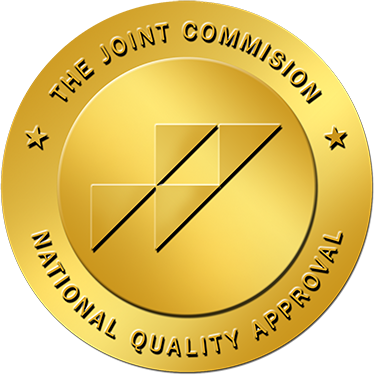Allied health jobs offer the chance to work in the healthcare industry without needing to spend years in school. For those who want to start working as soon as possible in a fast-growing healthcare career, there are a variety of allied health jobs that offer high pay with just a few years of training to choose from.
If you’re considering starting the journey toward becoming an allied health professional in 2025, there are some trends to keep in mind. Explore some of the most sought-after allied health specialties below.
Physician assistant
A physician assistant (PA) is a medical professional who works under the supervision of a physician. PAs help diagnose and treat patients, prescribe medications, and even perform certain medical procedures. In understaffed or rural areas, they are often a primary source of care for local patients.
PAs work in hospitals, physician’s clinics, outpatient centers, and community clinics. To become a PA, you’ll need to obtain an undergraduate degree and then get experience working in the field. Once you reach the requisite number of experience hours, which is typically about 2,000, you can enroll in a master's program.
Once you complete the program, you’ll need to pass the national certifying exam and obtain your license. Although the process can seem lengthy, PAs make some of the best salaries in the allied health field. Their median salary is $130,020. This career is also one of the fastest growing, with a growth rate of 28% expected from 2023 to 2033.
Occupational therapy assistant
An occupational therapy assistant helps occupational therapists provide care to patients. They prepare treatment rooms, teach patients new ways of performing everyday tasks, guide them in therapeutic activities, and record their progress. Occupational therapist assistants always work under the direction of licensed occupational therapists.
Occupational therapist assistants typically work in physicians’ offices, hospitals, nursing care facilities, and schools. You will need to complete either an associate or bachelor’s degree from an accredited program to become one, which can take between two and four years. You’ll also have to acquire a state license.
The median salary for occupational therapist assistants is $65,450 per year. About 10,600 new positions in this field are expected by 2033.

Speech-language pathologist
Speech-language pathologists, also called speech therapists, are allied health professionals who diagnose and treat speech and swallowing disorders in children and adults. They can help address speech delays and impediments, difficulty swallowing, and aphasia.
A speech-language pathologist evaluates the patient’s speech, language, or swallowing problem and offers an individualized treatment plan to manage these issues. They often collaborate with medical professionals and educators, and they work in schools, hospitals, nursing care facilities, and many other settings.
To become a speech-language pathologist, you will need a master’s degree in speech-language pathology. You can then obtain your certification and license. Depending on where you choose to work, you may also need to have a teaching certification.
The annual median salary for a speech-language pathologist is $89,290. By 2033, there will be 33,300 new speech-language pathologist positions available.
Physical therapist
Physical therapists (PTs) are allied health professionals who help people with mobility issues, pain, or impairments as a result of injuries and illnesses.
They review patients’ medical histories and diagnose movement problems. They can then create a personalized treatment plan that relies on stretches, hands-on therapy, and equipment to ease discomfort.
PTs care for people of all ages and often work with those who have neurological disorders, arthritis, and other conditions, as well as those who have suffered fractures and a variety of injuries. PTs work in hospitals, doctors’ offices, and nursing care facilities.
To become a physical therapist, you will need to obtain a doctor of physical therapy degree from an accredited program. These typically take about three years and require that you first obtain a bachelor’s degree. You will need to have a license as well. Once you get enough experience, you can also receive certification.
The annual median pay for PTs is $99,710. This career path has an expected growth rate of 14% from 2023 to 2033, which is much faster than other professions.
Respiratory therapist
Respiratory therapists (RTs) help patients of all ages who have breathing problems as a result of illnesses, injuries, or congenital conditions. They perform diagnostic tests, assess patients, provide treatment for a variety of conditions, and consult with physicians about the most appropriate treatment options.
RTs work closely with registered nurses, doctors, surgeons, and physician assistants. Work settings can include hospitals, doctors’ offices, and nursing care facilities.
To become a respiratory therapist, you will need to have at least an associate degree, though many employers are now looking for bachelor’s degrees. All states except Alaska require you to have a license to work as an RT. You can also obtain certification via the National Board for Respiratory Care.
The annual median pay for a respiratory therapist is $77,960. By 2033, it’s expected that there will be 17,500 new jobs created in this field.
Cath lab tech
A catheterization laboratory tech, or cath lab tech, assists cardiologists in diagnosing and treating cardiovascular conditions. They can work locally or as travel cath lab techs who provide care throughout the country.
These professionals prepare patients for procedures, handle imaging equipment to visualize blood vessels and other structures, and assist in cardiovascular interventions. Cath lab techs typically work in hospitals, doctors’ offices, and outpatient imaging centers. Some prefer to work in diagnostic laboratories.
To become a cath lab tech, you will need at least an associate degree in cardiovascular technology or a related field. You will then need to obtain certification, which you can do through the American Registry of Radiologic Technologists (ARRT) or Cardiovascular Credentialing International (CCI).
Cath lab techs earn median annual salaries of $80,850. It’s expected that there will be 15,200 new jobs in this field of allied health by 2033.

Ultrasound tech
An ultrasound technologist is an allied health professional who uses ultrasound equipment to capture images of organs, blood flow, and tissues. These images help physicians make accurate diagnoses.
Ultrasound techs prepare patients and place them correctly to obtain the best imaging results while also maintaining the equipment and reviewing images to spot abnormalities.
Local ultrasound techs work in long-term positions in hospitals, diagnostic laboratories, and outpatient care centers. It’s also possible to become a travel ultrasound tech and take short-term positions across the country.
To become an ultrasound tech, you’ll have to obtain either an associate or bachelor’s degree. These days, more employers are looking for a bachelor’s degree. Local hospitals may also offer certificate programs, which typically take a year to complete.
You can apply for certification right after you finish your studies, or you can wait to be hired and then go for certification. The decision can come down to whether your state requires a specific number of experience hours before you’re eligible to take the certification exam.
The median annual salary for an ultrasound tech is $80,850. By 2033, it’s expected that there will be 15,200 new jobs in this allied health field.
Audiologist
Audiologists specialize in diagnosing and treating balance and hearing disorders. They work with patients of all ages who may be suffering from tinnitus, vestibular disorders, and many other conditions. Audiologists examine patients, create treatment plans, perform routine procedures, fit hearing aids, and provide education.
These allied health professionals can work in hospitals, physicians’ offices, community clinics, and schools. Often, they work closely with nurses, speech-language pathologists, and even surgeons.
To become an audiologist, you must first obtain your bachelor’s degree in a related field. Then you will need to obtain a doctor of audiology degree, which usually takes four years. Audiologists must be licensed. You can choose to earn additional certifications, which are offered by the American Speech-Language-Hearing Association (ASHA) and the American Board of Audiology.
Audiologists earn a median annual salary of $87,740. This career is growing at a rate of 11% and is expected to continue in that manner until 2033.
Start your journey as an allied health professional
Working as an allied health professional allows you to help patients directly in a more specialized field. There are numerous career paths you can take and many settings in which you can work. Travel allied health positions are particularly popular because they allow you to travel across the country, offering care where it’s most needed.
How do you get started? At Prolink, we are dedicated to helping healthcare professionals find the right opportunities. We’re a true career partner that collaborates with some of the leading healthcare organizations in the country and works tirelessly to help you with the right job.
We get to know everyone we work with so that we understand what your career goals are and what you’re looking for. We’ll then do everything we can to help you get to the finish line.
Looking to begin or change your career path in 2025? Click below to connect with a Prolink recruiter and take the first step today.









